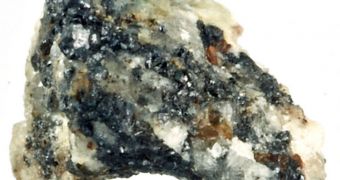A team of geologists analyzing a puzzling rock sample discovered that it was made up of a type of crystal that had never before been encountered in nature. Scientists know all there is to know about this material, but only because they created it in the lab. Now, they hypothesize that the rock is in fact a meteorite.
The space rock may have originated in the earliest days of the solar system, and may have arrived here a very long time ago. Some experts believe that crystals such as this particular one cannot form naturally on our planet, and that, therefore, they must have extraterrestrial origins.
It's been two years since scientists have been working on deciphering the origins of this mysterious rock, which was discovered in Russia. Its quasicrystal nature most likely comes from outer space, geologists now believe, since it's highly unlikely that such a material can form inside the Earth.
Interestingly enough, the chemical composition of the sample – mostly featuring aluminum and metallic copper – is very similar to that of ancient meteorites called carbonaceous chondrites. Astronomers believe that such chondrites are made of the same original material that spawned planets.
Since researchers first learned that quasicrystals can be manufactured, they began an avid search for naturally-occurring variations of such materials. The sample discovered in the Koryak Mountains of eastern Russia is the first hit they got in decades, Space reports.
Princeton University researcher Paul Steinhardt and his team started the methodical search in 1998. In 2007, they found the rock in University of Florence expert Luca Bindi's collection. The Italian scientist was the one who concluded recently that the rock must have alien origins.
Details of the study he and his team conducted appear in the January 2 issue of the esteemed journal Proceedings of the National Academy of Science (PNAS). The key that finally cleared the mystery was an analysis of oxygen isotopes.
These atomic variations depend a lot on the conditions in which the material containing them formed. In space, these conditions include exposure to cosmic rays and radiations, whereas materials that form inside the Earth are largely shielded from these factors.
“Now that we know that quasicrystals formed in the early solar system, we need to understand exactly how. More material and more tests are needed to understand how nature has managed to accomplish the feat,” Steinhardt explains
“My hope is that many more mineralogists, petrologists and meteorite experts will begin searching for natural quasicrystals as well,” he concludes.

 14 DAY TRIAL //
14 DAY TRIAL //